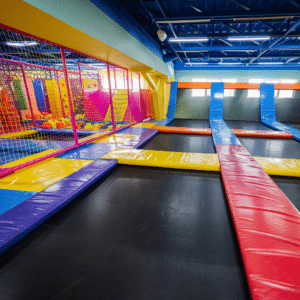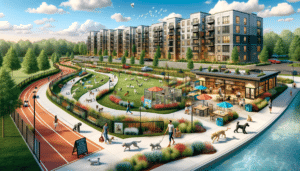The widespread shift to online shopping created a retail apocalypse, leaving dead malls and vacant storefronts to haunt towns across America. Fortunately, the adaptive reuse of old buildings for community services can resuscitate abandoned spaces. Most unused retail and office spaces occupy prime real estate locations. In addition, they are often already connected to public utilities, sidewalks, transportation, etc. So, adapting them is more financially and environmentally sustainable than new construction.
Sustainable Urban Renewal
Building new structures adds to urban sprawl while abandoned office buildings and big box stores continue to dot the cityscape. However, reusing existing architecture spurs positive change in the community. Adaptive reuse is a sustainable way to introduce new elements to underused infrastructure. For example, renovation uses less energy and materials than new construction while also producing much less waste. Similarly, adaptive reuse is economically sustainable because it reduces construction and design costs.
Impact Investment
Many people consider adaptive reuse an investment opportunity to impact local communities. Every population has unmet needs, such as unemployment, health disparities, and overcrowded classrooms. Thus, communities across the country will benefit from greater access to learning, work, and health opportunities. Investors can make a positive change in community development by repurposing old retail and office space into community assets such as doctors’ offices, job centers, and affordable housing.
Bundled Tenant Solution
Adaptive reuse can be sustainable both environmentally and financially. But it takes creative problem-solving to succeed. For example, a bundled-tenant approach creates centers for similar community services to thrive. In addition, repurposing neglected areas into human development centers provides services and economic benefits to cities and salvages commercial value for property owners. For example, food halls bundle dining establishments such as restaurants and coffee shops creating a culinary destination. Other examples of bundled human services include:
- Education centers and schools
- Government Services
- Health and Wellness Centers
- Daycare, elder care, and pet care
- Job and training services
- Health and wellness centers
- Food banks and thrift stores
- Exhibition and event space
- Indoor recreational parks
- Religious centers
A varied mix of all of the above also serves to create a unique blended mix of services for a vibrant
Historic Preservation
Many of our oldest New England cities have unique architectural design elements. An adaptive reuse approach to urban renewal can protect the local character of historic districts. In fact, federal and state tax credits encourage the rehabilitation of notable properties. For example, New Jersey’s Historic Property Reinvestment Program incentivizes the investment and revitalization of historic areas. Through adaptive reuse, we can preserve the unforgettable charm of New Jersey cities.
Adaptive Reuse of Old Buildings for Community Services
Turn empty retail space into equitable destinations through the adaptive reuse of old buildings for community services. Implementing such projects encourages economic development and provides access to much-needed services in structurally disinvested communities. The experts at Guzzo Architects can work with you to reimagine community real estate projects through adaptive reuse. Call us today at 201-939-1446.







